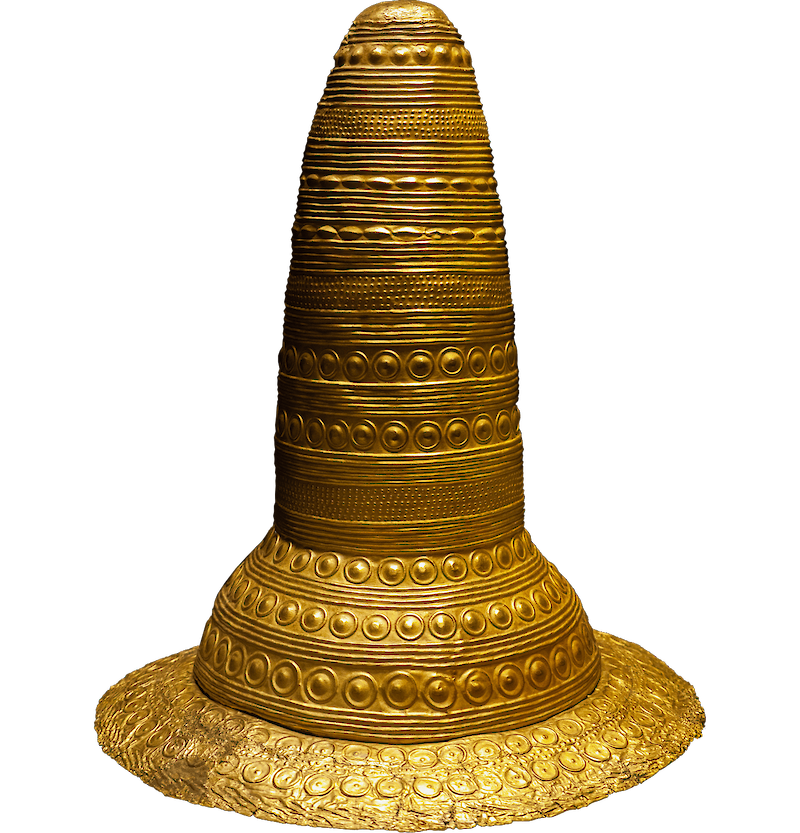
Golden Hat of Schifferstadt, Bronze Age Obelisk Art History
Golden Hat of Schifferstadt, found in 1835 at Schifferstadt near Speyer, c. 1400-1300 BC. Golden Cone of Ezelsdorf-Buch, found near Ezelsdorf near Nuremberg in 1953, c. 1000-900 BC; the tallest known specimen at roughly 90 cm (35 in).
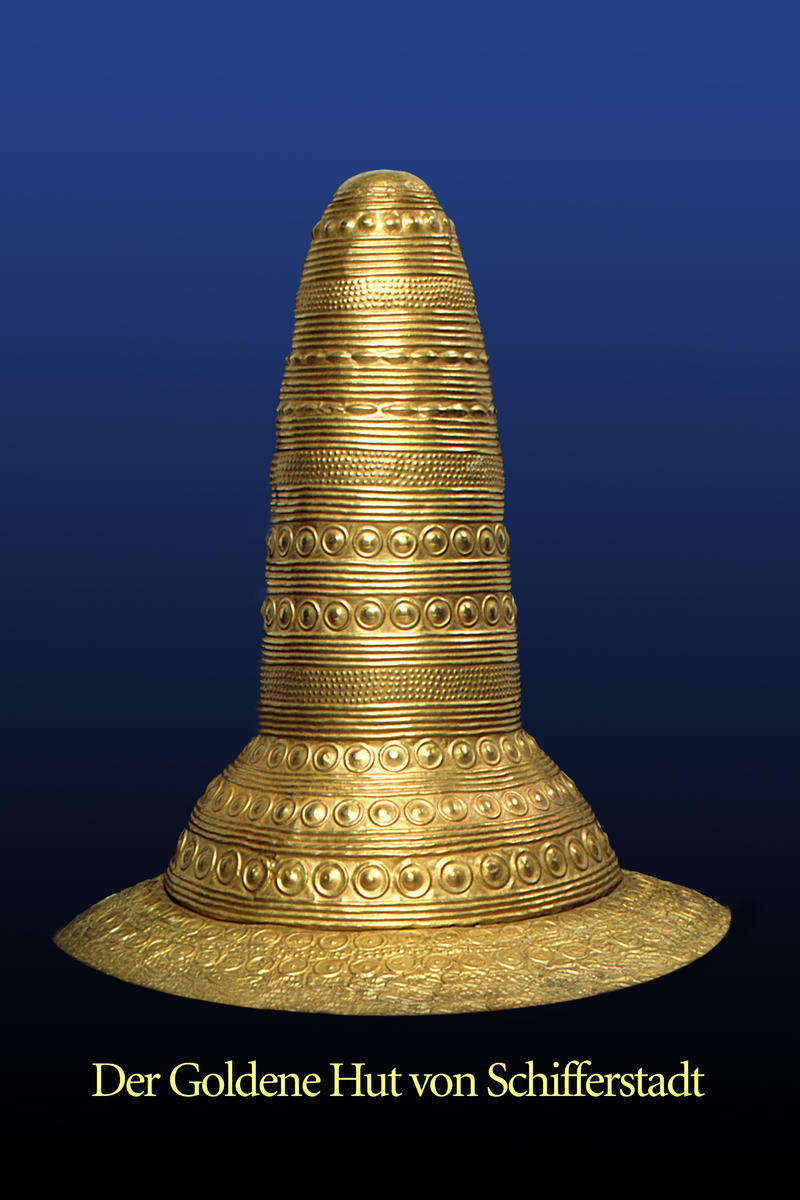
Partnerstädte / Aichach
Golden Hat of Schifferstadt, found in 1835 at Schifferstadt near Speyer, c. 1400-1300 BC. Golden Cone of Ezelsdorf-Buch, found near Ezelsdorf near Nuremberg in 1953, c. 1000-900 BC; the tallest known specimen at roughly 90 cm (35 in).

Chapeau d'or de Schifferstadt 14001300 av. J.C., Or, Provenance Schifferstadt, Musée
The Berlin Hat appears to be the most recent of the four. A second hat, which is called the Golden Hat of Schifferstadt, found in a well preserved state near the city of Speyer in Germany, appears to be the earliest sample of this type of artifact. It was also discovered much earlier, in 1835, and is thought to be at least 300 years older than.

Goldener Hut in London ausgestellt Speyer/Schifferstadt DIE RHEINPFALZ
The Schifferstadt Golden Hat is made from a single sheet of hammered gold, repeatedly heated and beaten down to thickness of paper, about 0.25 millimetres thick, and then shaped into a cone. The brim is even thinner than the cone. The entire hat is 29.6 cm high, about 18 cm wide at the base, and the brim is about 4.5 cm wide beyond the cone..

Der „Goldene Hut von Schifferstadt“ in London ausgestellt
The Golden Hat of Schifferstadt ( German: Der Goldene Hut von Schifferstadt) was discovered in a field near the town of Schifferstadt in Southwest Germany in 1835. It is a Bronze Age artefact made of thin sheet gold and served as the external decoration of a head-dress, probably of an organic material, with a brim and a chin-strap.
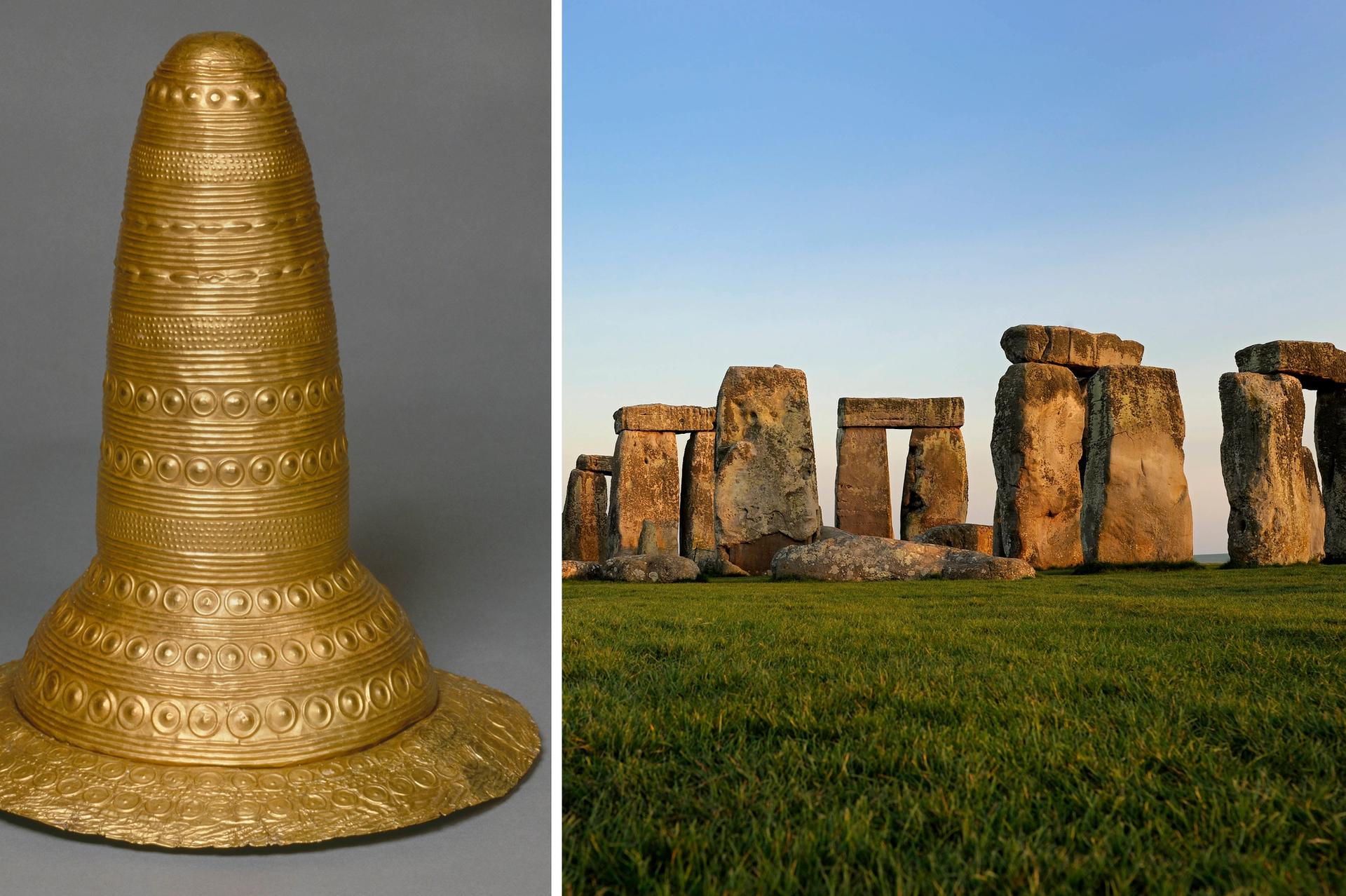
Golden hats, celestial discs and circles of wood and stone British Museum reveals treasures in
From the burial location of the Nebra disk the Sun sets on the highest mountain of the Harz range, the Brocken, on the summer solstice. Here we investigate whether the burial location of the Schifferstadt golden hat also had an astronomical meaning.
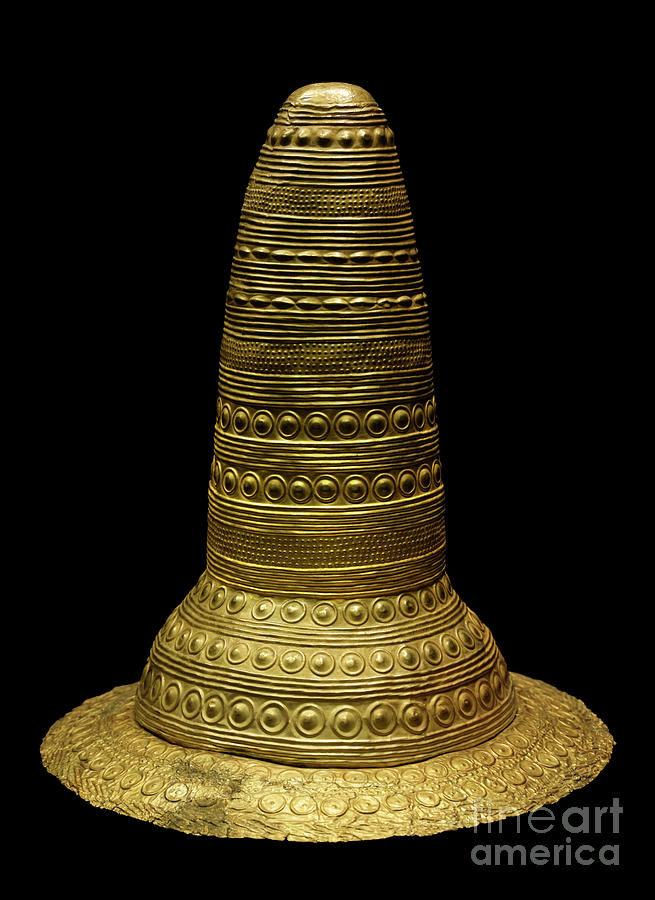
Schifferstadt Gold Hat Photograph by David Parker/science Photo Library Fine Art America
The Golden Hat of Schifferstadt. Photo: Wikipedia Creative Commons. The hat is 74.5 cm tall and magnificent, but it's not heavy. It only weighs 490 grams. In the Neues Museum, they also have tools such as a small anvil and various metal punches with concentric rings, with which this object was likely manufactured.
Golden Hat of Schifferstadt. Urnfield tradition, Bronze Age. Dated to 1,4001,300 BC and the
The Schifferstadt gold hat (around 1600 BC,. The continental golden hats date from around 1600 BC-800 BC, more recent than Stonehenge (mainly erected around 2500 BC, although in use until.
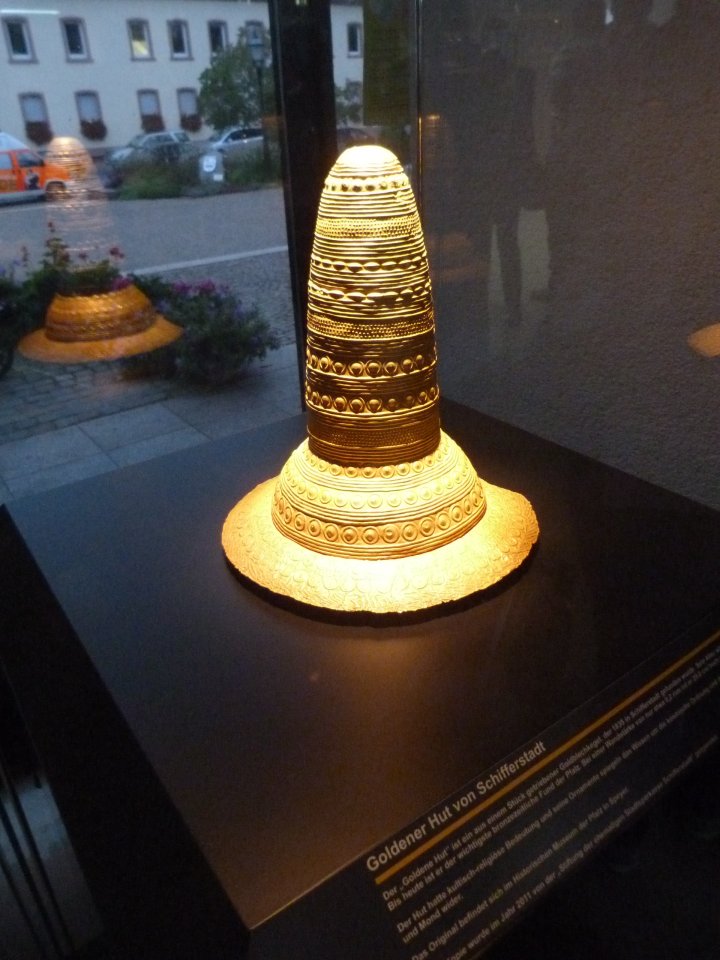
Tag des Goldenen Hutes Stadtverwaltung Schifferstadt
The Berlin gold hat is a 490 g (15.75 troy ounces) gold hat with a long and slender conical shaft and a differentiated convex foot, decorated all over with repousse traced motifs, applied with small stamps and wheels. Its composition is very similar to the previously known Golden Cone of Ezelsdorf-Buch .

The Golden Hat of Schifferstadt (German Der Goldene Hut von Schifferstadt) was discovered in a
The first of them is 'Golden Hat of Schifferstadt', discovered in 1835 at Schifferstadt near Speyer, c. 1400-1300 BC; the second is the so-called 'Avanton Gold Cone' (incomplete), found at Avanton near Poitiers in 1844, and dated to c. 1000-900 BC.

Celtic gold hats of Avanton/France, EtzelsdorfBuch/Bavaria, and Schifferstadt/Rhineland
It is called the Golden Hat of Schifferstadt. It was found intact in a field just outside of Speyer, and it is housed in the Historical Museum of the Palatinate in Speyer. The similarities between the two hats I viewed were obvious. Golden Hat of Schifferstadt (Speyer) Bronze Age Gold Hat. Photographer: Jaunting Jen

Nina Willburger on Twitter "The stunning gold hat from Schifferstadt (RhinelandPalatinate
June 24, 2022 1 year ago share FacebookTwitterShare via Email In 1835 in the town of Schifferstadt in Southwest Germany, a treasure from the Bronze Age was unearthed. Buried in an upright position atop a sheet of burnt clay, this mysterious object was found with three bronze axes leaning against its hammered gold surface.
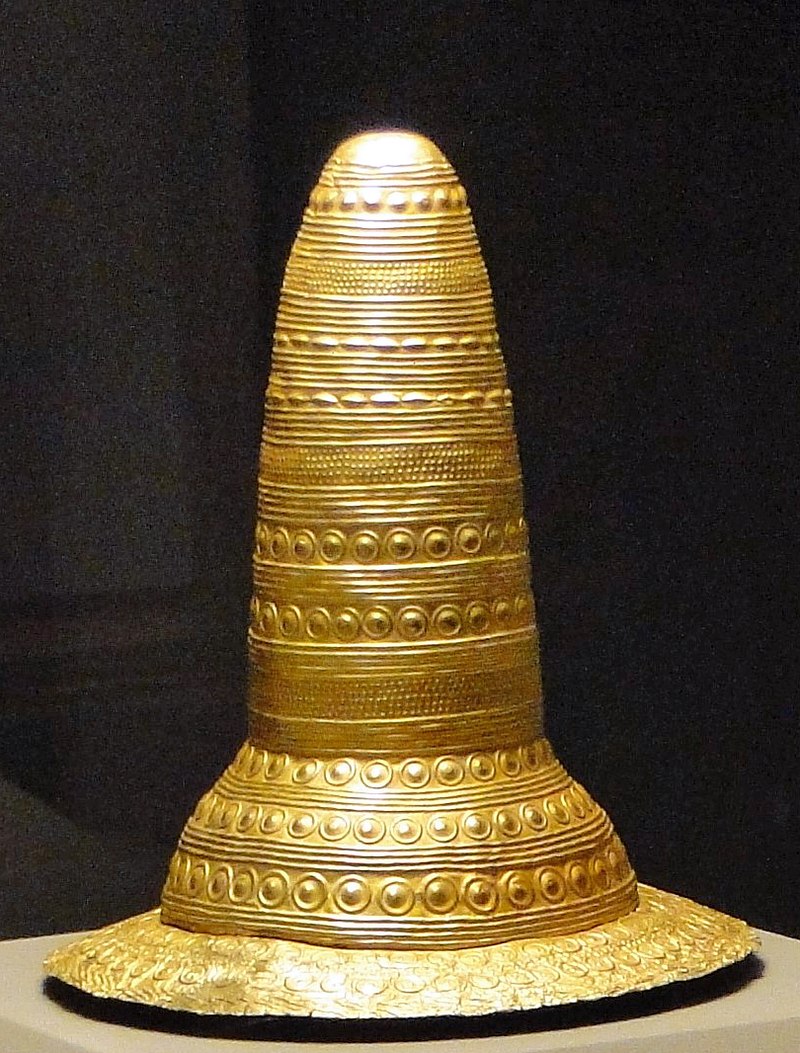
Ancient History
It's now known as the Golden Hat of Schifferstadt and is housed in the History Museum of Speyer. The town has even erected a stone plaque in honor of the Schifferstadt Synagogue that was completely ruined on Kristallnacht in November 1938.

GERMANY, Goldener Hut from Schifferstadt, gold 1977, 30 Pfennig on eBid United Kingdom 190196791
Golden Hat of Schifferstadt (1400-1300 BC) was found in 1835 at Schifferstadt near Speyer. Avanton Gold Cone (1000-900 BC) was found incomplete at Avanton near Poitiers in 1844. Golden Cone of Ezelsdorf-Buch (1000-900 BC) was found near Ezelsdorf near Nuremberg in 1953 and is the tallest at 90 cm.

Four Gold Hats A Bronze Age Mystery Brewminate A Bold Blend of News and Ideas
Four conical golden hats of the Late Bronze Age were discovered in southern Germany and western France in the nineteenth and twentieth centuries. Their users were probably members of a caste of.

GERMANY, Goldener Hut from Schifferstadt, gold 1977, 30 Pfennig on eBid United Kingdom 190196791
The Golden Hat of Schifferstadt ( German: Der Goldene Hut von Schifferstadt) was discovered in a field near the town of Schifferstadt in Southwest Germany in 1835. It is a Bronze Age artefact made of thin sheet gold and served as the external decoration of a head-dress, probably of an organic material, with a brim and a chin-strap.